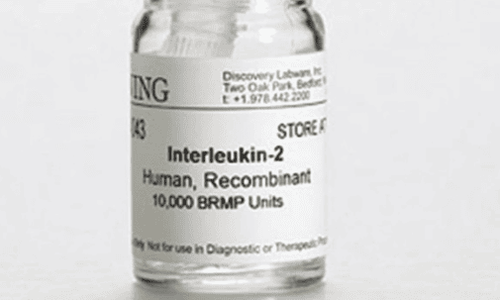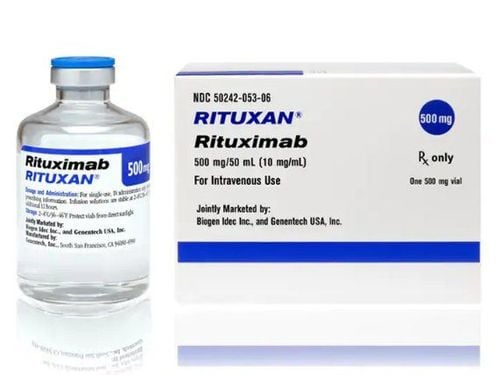This is an automatically translated article.
Skin T-cell lymphoma (CTCL) is a rare type of cancer and starts in white blood cells called T cells (T lymphocytes). In cutaneous T-cell lymphoma, the cancer cells grow abnormally, making it easier for the microflora to attack the skin. So is T-cell skin cancer dangerous? How is this disease treated? Let's find out information about T-cell skin cancer (CTCL) through the article below.
1. What is T-cell skin cancer (CTCL)?
Skin T-cell lymphoma (CTCL) is a rare type of Non-Hodgkin Lymphoma (NHL) that specifically affects T cells. These T cells normally help the body's immune system. you fight invading germs.
Non-Hodgkin lymphoma can be divided into two groups: B-cell non-Hodgkin lymphoma and T-cell lymphoma. T-cell lymphoma comes in many forms. Treatment and overall outlook will depend on the type and extent of the disease at diagnosis. One major type of T-cell lymphoma is cutaneous T-cell lymphoma. Skin T-cell lymphoma mainly affects the skin, but can also involve the lymph nodes, blood, and internal organs.
In its most common form (Mycosis Fungoides), in the early stages, the disease is detected by waxy and fading tumors, lesions and plaques showing migration of malignant T cells to skin. More severe disease (known as Sézary Syndrome) is detected from more systemic disease and has a lower survival rate. Treating the disease in its early stages helps relieve symptoms and can slow the progression of the disease. While there is no FDA-approved first-line therapy, there are off-label treatments as well as some for first-line and critical illness. CTCL is often a chronic disease that requires lifelong attention. Therefore, treatment options must be carefully managed to minimize side effects, including potential risks for more serious cancers such as melanoma.
CTCL includes a number of different T-cell cancers and represents about 6% of the nearly 700,000 non-Hodgkin lymphomas in the United States
CTCL cancers usually do not progress over time, which means they are contagious It spreads slowly and is usually not life-threatening, especially in the early stages of the disease.
CTCL is more common in men than in women and usually occurs in patients over 50 years of age. Because the disease progresses slowly and diagnosis is sometimes difficult, there may be more people living with CTCL than current estimates
2. Symptoms of T-cell skin cancer
Symptoms of CTCL will include: flat, scaly skin, thick, raised patches of skin, tumors that may or may not develop into sores, itching and this is usually diagnosed as a fungus Secondary Mycosis Fungoides. Lesions usually occur in areas not exposed to the sun and may be scaly and/or itchy. It can be difficult to treat and can persist for years before being diagnosed. The disease can progress to tumors on the skin and can metastasize to the lymph nodes, liver, spleen, lungs, or blood. The 5-year survival rate for Mycosis Fungoides is about 88%.
Sézary syndrome is a more aggressive lymphoma where malignant cells are located in the skin, blood and lymph nodes. Symptoms of Sézary syndrome include: a red, itchy rash that covers most of the body and possibly the eyelids, changes to fingernails and hair, and enlarged, swollen, or swollen lymph nodes. Disease progression may involve other organs, and patients with Sézary Syndrome often have weakened immune systems and a higher risk of infection. The 5-year survival rate for Sézary Syndrome is about 24%.
Other symptoms of T-cell lymphoma
Bleeding or bruising easily Recurrent infection Fever or chills of unknown cause Fatigue Persistent abdominal pain on the left side due to enlarged spleen Distended abdomen Urinating Frequent Constipation
3. Diagnosis of cutaneous T-cell carcinoma (CTCL)
Skin biopsy Peripheral blood test and T-cell flow cytometry for circulating malignant T cells (Sézary cells) For staging, biopsy of lymph nodes and CT of chest, abdomen, and pelvis or FDG-PET This diagnosis is based on skin biopsy results, however histopathology may not be clear in the early stages due to low lymphocyte count. Malignant cells are mature T lymphocytes (T4+, T11+, T12+) that have lost common T-cell markers such as CD7.
Characteristic Pautrier microprocessors will be present in the epidermis on perforated skin biopsies. In some cases, there is an episode of leukemia known as Sézary syndrome- characterized by the appearance of malignant T-lymphocytes with zigzag nuclei in the peripheral blood. They can also be detected on Wright staining slides or by flow cytometry.
4. What factors increase the risk of T-cell lymphoma?
Age: most lymphomas occur in people age 60 and older, but some types are more likely to affect children and young adults. Gender: some diseases are more likely to affect women, others are more likely to affect men. Race and location: Disease more common in developed countries Chemicals and radiation: Nuclear radiation and some chemicals used in agriculture have been linked to non-Hodgkin lymphoma. Immunodeficiency: People with weakened immune systems are at a higher risk of getting sick. This may be due to HIV/AIDS infection, medications prescribed after an organ transplant. Autoimmune diseases: the immune system attacks the body's own cells, such as rheumatoid arthritis and celiac disease. Infections: Some viral and bacterial infections mutate lymphocytes that increase the risk of disease, such as the Epstein-Barr virus (EBV), which causes glandular fever. Breast implants: can cause large cell lymphoma to self-implant in the breast tissue. Body weight and diet: obesity is associated with the development of lymphoma, although more research is needed to confirm the link.
5. How is T-cell skin cancer (CTCL) treated?
There are many treatments for people with cutaneous T-cell lymphoma. Most people receive a combination treatment depending on the extent and stage of the disease.
Treatment options may include:
Skin creams and ointments . Medicines can be applied to your skin in the form of creams, gels, and ointments. Corticosteroids can help control redness and itching. Chemotherapy can be used to attack cancer cells.
Light therapy (phototherapy). Phototherapy involves exposing the skin to wavelengths of light, such as UVB or UVA rays. Phototherapy is sometimes done after using a drug that makes skin cells more sensitive to light.
Radiotherapy . Radiation therapy uses beams of energy to kill cancer cells. If the disease is present in only one area of the skin, standard radiotherapy with X-rays may be recommended. For people with more than one affected area, radiation therapy can be done with an electron beam. This therapy targets the skin and does not affect internal organs.
Medicine . Medications used for treatment include drugs to control the immune system, such as steroids and interferon. Chemotherapy drugs attack rapidly growing cells, including cancer cells. Targeted therapy attacks particularly vulnerable cells.
Other treatments:
Exposure of blood cells to light. A procedure called photoextracytosis. This includes taking a medicine that makes your cells more sensitive to light. Your blood is then filtered through a machine, then exposed to ultraviolet light before being returned to your body.
Bone marrow transplant . Bone marrow transplant, also known as stem cell transplant. A procedure to replace your diseased bone marrow with healthy bone marrow from an edematous donor. During the transplant, you will receive medicines to suppress the diseased bone marrow. Then the healthy donor cells are infused into your body. They will travel to your bones and start building and re-forming bone marrow. Skin T-cell lymphoma is a type of cancer in the body's immune system. The disease can present with many different symptoms depending on the stage of the disease. If you notice any unusual signs and symptoms, see your doctor for an exam and tests to help diagnose the disease early.
Please dial HOTLINE for more information or register for an appointment HERE. Download MyVinmec app to make appointments faster and to manage your bookings easily.
Reference sources: soligenix.com, mayoclinic.org












